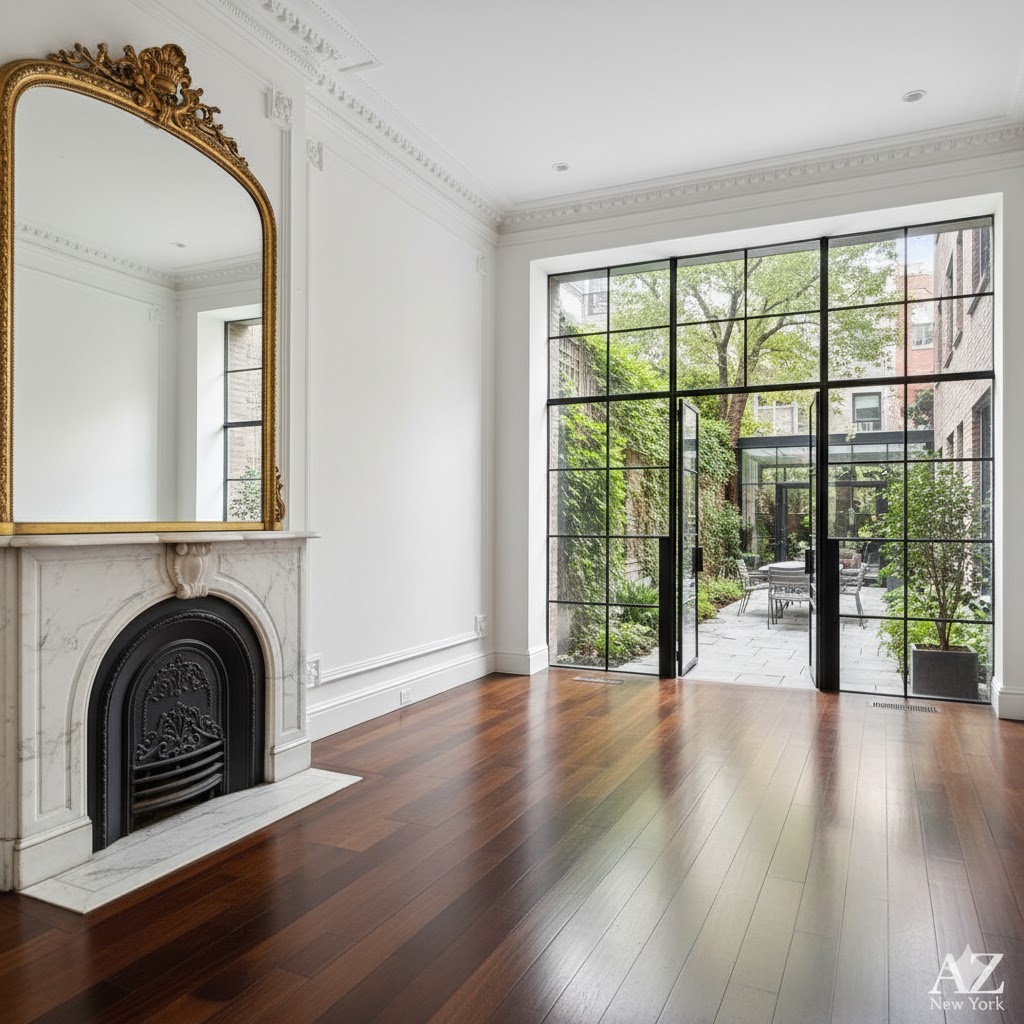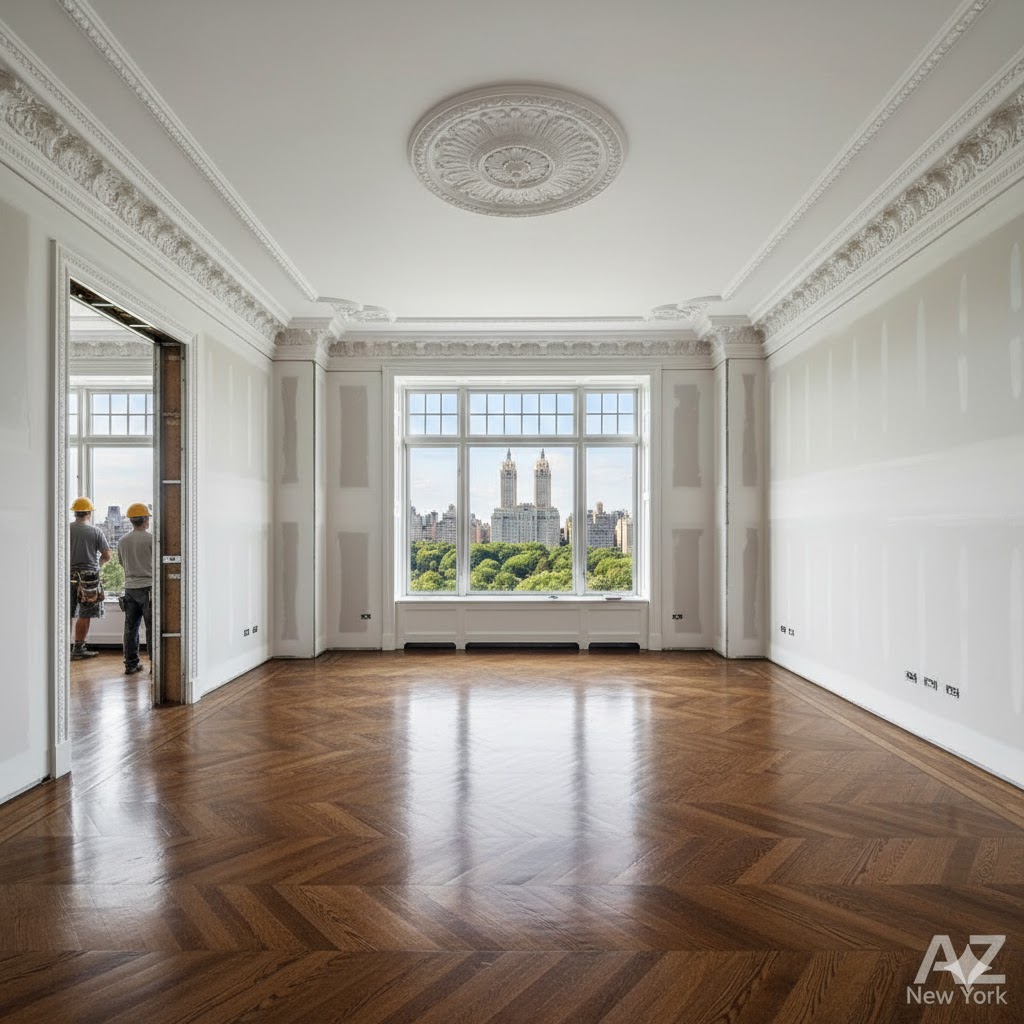How deep is the connection between the political power of Washington D.C. and the decisions made on Wall Street?

How deep is the connection between the political power of Washington D.C. and the decisions made on Wall Street?
Wall Street and Washington D.C. are the twin centers of American power. One is the capital of finance, the other the capital of governance. Though separated by 200 miles, the line between them is often nonexistent.
This connection, sometimes called the “Acela Corridor,” represents a deeply intertwined relationship between money and policy. It’s a symbiotic loop where decisions made in one capital profoundly influence the other.
This relationship is built on a foundation of lobbying, campaign finance, and a constant flow of personnel between government and high finance. It’s a connection that shapes everything from financial regulations to global economic bailouts.
In this fourth deep dive from AZ New York, we’ll explore the mechanisms that bind these two worlds together and what it means for the rest of us.
The Three Pillars of Influence
The connection between Wall Street and D.C. isn’t accidental; it’s a meticulously constructed system built on three core pillars that ensure the financial industry’s voice is always heard in the halls of power.
Pillar 1: Multi-Million Dollar Lobbying Efforts
Lobbying is the most direct tool of influence. The financial industry spends hundreds of millions of dollars each year employing firms and individuals to advocate for its interests directly with lawmakers and regulators.
Their goal is often to shape legislation in their favor, pushing for deregulation, favorable tax treatment, and policies that benefit their bottom line. According to watchdog groups like OpenSecrets, the finance, insurance, and real estate sector is consistently one of the top-spending industries on lobbying.
Pillar 2: The “Revolving Door”
The “revolving door” is the term for the constant movement of high-level individuals between government positions and lucrative private-sector jobs on Wall Street.
A former Treasury Secretary may join a private equity firm. A former head of the SEC might become a partner at a law firm representing the very banks they once regulated. This creates a powerful network of insiders and raises serious questions about potential conflicts of interest.
Pillar 3: The Power of Campaign Finance
Political campaigns are incredibly expensive, and Wall Street is a primary source of funding. Executives and Political Action Committees (PACs) from the financial sector donate vast sums to candidates from both major political parties.
While not a direct bribe, these contributions guarantee access. They ensure that when a new financial regulation is being debated, the industry’s top executives will have a seat at the table to voice their concerns.
Real-World Consequences of the Connection
This relationship isn’t just theoretical. It has led to tangible policy outcomes that have shaped the American economy for decades, most notably during times of crisis.
Case Study: The 2008 Financial Crisis Bailout
The 2008 crisis is the ultimate example. The U.S. Treasury Secretary at the time, Henry Paulson, was the former CEO of Goldman Sachs. He was instrumental in designing the Troubled Asset Relief Program (TARP), a massive bailout for the banking industry.
Critics argue that this is a clear case of the revolving door at work, where a former industry insider crafted a government response that saved his former peers from collapse, an event overseen by the Federal Reserve.
Pro Tip: You can become a more informed citizen by using public resources. Websites like OpenSecrets.org allow you to search for your local representatives and see which industries and companies are their top campaign contributors. This provides a clear picture of the financial influences on your elected officials.
A Piece of History: The creation of the U.S. Federal Reserve system itself is a classic story of this connection. In 1910, a small group of top bankers and Senator Nelson Aldrich met in secret on Jekyll Island, Georgia. They represented roughly one-quarter of the world’s wealth at the time. Over a week, they drafted the foundational plan for a central banking system, a framework that would later become the Federal Reserve Act of 1913.
Frequently Asked Questions (FAQ)
The tight bond between finance and politics raises many important questions. Here are a few.
Is this kind of influence legal?
For the most part, yes. Lobbying and campaign contributions are legally protected forms of speech and petitioning the government. However, they are governed by complex disclosure laws and regulations. The “revolving door” also has some restrictions, such as “cooling-off periods” before former officials can lobby their old agencies.
Does Wall Street favor one political party over the other?
Historically, the financial industry donates to both parties, though the balance can shift. They often give more to the party in power to maintain influence. Ultimately, their loyalty is not to a party, but to policies that favor the financial sector.
How does this connection impact me directly?
It impacts the safety net of the financial system. Deregulation can lead to greater risks, potentially triggering crises that result in job losses. It also influences tax policy, determining how much corporations pay versus individuals. It shapes the economic landscape in which you live and work.
Keywords for Your Next Internet Searches on the Subject…
Wall Street Washington connection, financial lobbying, revolving door government finance, campaign finance reform, TARP bailout explained, Dodd-Frank Act, financial deregulation impact, money in politics.
Tags
Wall Street, Washington D.C., Lobbying, Campaign Finance, Revolving Door, Financial Regulation, US Politics, Economic Policy, Federal Reserve, SEC, Dodd-Frank Act, 2008 Financial Crisis, TARP, Corporate Influence, Government, Finance, Financial District, Deregulation, Political Donations, Public Policy, US Economy, Money in Politics, OpenSecrets, FiDi, New York City
Part 1: Business, Economy, and Power (1–20)
This section explores the core of what makes the Financial District tick: the deals, the institutions, and the immense power that flows through its veins.
- What does it really mean to “work on Wall Street” today?
- How does the “investment banking” culture of FiDi shape the global economy?
- What is the true influence of the New York Stock Exchange (NYSE) on the daily lives of ordinary people?
- How deep is the connection between the political power of Washington D.C. and the decisions made on Wall Street?
- Does the “Charging Bull” still symbolize prosperity, or has it become an icon of corporate greed?
- What are the best-kept secrets of the major investment banks headquartered in FiDi?
- How is the rise of fintech and cryptocurrencies challenging the traditional financial dominance of Wall Street?
- What is the true human cost behind the multi-billion dollar profits generated in the Financial District?
- If the walls of Goldman Sachs or J.P. Morgan’s offices could talk, what would they reveal about power?
- Is Wall Street’s “work hard, play hard” culture sustainable in the long run?
- What is the role of the Federal Reserve Bank of New York in the stability (or instability) of the world economy?
- How ethical are the practices that led to the rise of so many financial empires in FiDi?
- What is the impact of artificial intelligence on the high-frequency trading that occurs on Wall Street?
- Who are the real “wolves” of Wall Street today?
- How is the gentrification of the Financial District transforming the social and economic landscape of Lower Manhattan?
- What is the next major financial crisis that could emerge from Wall Street?
- What does the concentration of so much financial power in a single area say about social inequality in the U.S.?
- How does the annual bonus culture on Wall Street affect the mindset and decisions of traders?
- What is the true story behind the fortunes built and lost on Wall Street?
- If the Financial District were a country, what would its GDP and foreign policy be?
Part 2: Lifestyle, Behavior, and Wall Street Culture (21–40)
Beyond the numbers, there’s a unique culture. This section delves into the daily lives, habits, and social dynamics of the people who power the Financial District.
- What is the unwritten dress code for success in FiDi?
- What is the daily routine of a junior analyst at an investment bank on Wall Street?
- What role do happy hours play in the networking and deal-making culture of the Financial District?
- Is life in FiDi more like the show “Billions” or the movie “The Wolf of Wall Street”?
- What are the most coveted status symbols among Wall Street professionals?
- How does the pressure to perform affect the mental health of workers in the Financial District?
- What is the “secret language” and jargon used by Wall Street insiders?
- Is there a “Wall Street dream” analogous to the “American dream”?
- How do FiDi professionals balance their personal lives with the long working hours?
- What is the role of exclusive clubs and secret societies in Wall Street’s power hierarchy?
- How has Wall Street’s culture changed since the 2008 financial crisis?
- What do “Wall Street bros” do for fun on the weekends?
- What is the soundtrack to the life of a successful trader on Wall Street?
- How important are philanthropy and donations to the public image of Wall Street billionaires?
- What are the gender dynamics like in an environment as male-dominated as Wall Street?
- What is the diet of a high-performance professional in the Financial District?
- What do Wall Street veterans teach newcomers about surviving in this competitive environment?
- What is the impact of Wall Street culture on New York City’s nightlife and relationships?
- What happens when someone on Wall Street “breaks” and loses everything?
- What cultural legacy is the current generation of Wall Street professionals leaving for the future?
Part 3: Architecture, Real Estate, and Urbanism (41–55)
The very streets and buildings of the Financial District tell a story. Here, we examine the physical environment that houses the world’s most powerful economic engine.
- How does the architecture of the Financial District’s skyscrapers reflect the power and ambition of their occupants?
- What is the story behind the names of FiDi’s streets, like Wall Street, Broad Street, and Pearl Street?
- How did One World Trade Center and the 9/11 Memorial change the landscape and spirit of the Financial District?
- What is the real cost of a luxury apartment with a view of the world’s financial heart?
- How did the geography of Lower Manhattan influence the development of the Financial District?
- What architectural secrets are hidden in the historic buildings of Wall Street?
- How does FiDi’s transportation infrastructure (subway, ferries, etc.) support the daily flow of millions of people?
- What is the future of office space in the Financial District in the era of remote work?
- How are security and surveillance integrated into the architecture and urban planning of FiDi?
- What is the historical significance of places like Trinity Church amidst the modern skyscrapers?
- How is real estate development in FiDi expanding into adjacent areas like the Seaport District?
- What is the environmental impact of concentrating so many buildings and people in such a small area?
- What do future urban planning projects reveal about the evolution of the Financial District?
- What does it feel like to walk through the narrow streets and canyons of steel and glass in FiDi?
- How is New York’s history as a commercial port still visible in the urban landscape of the Financial District?
Part 4: Gastronomy, Entertainment, and Leisure (56–70)
Where do the power players dine, drink, and unwind? This section explores the culinary and recreational landscape of the Financial District.
- Where do Wall Street bankers have lunch to close multi-million dollar deals?
- What is the most iconic bar in the Financial District for a “power happy hour”?
- How has FiDi’s dining scene evolved from simple “power lunches” to Michelin-starred restaurants?
- What role do steakhouses play in Wall Street’s business culture?
- What are the secret getaways and leisure spots for FiDi professionals to escape the pressure of work?
- How does the nightlife in the Financial District compare to other Manhattan neighborhoods, like the Meatpacking District?
- What is the most ordered drink in Wall Street bars after the market closes?
- Where do Wall Street traders celebrate a day of record profits?
- How important is coffee to the frantic routine of the Financial District?
- How are cultural and artistic events beginning to flourish in an area traditionally focused on business?
- What is the best spot in FiDi to watch the sunset over the Hudson River?
- What luxury entertainment options are available to the Wall Street elite?
- How does street food (food trucks) adapt to serve the hurried crowds of the Financial District?
- What do the restaurants and bars in FiDi reveal about the hierarchy and status of their patrons?
- What is the experience of dining in an exclusive restaurant at the top of a Financial District skyscraper?
Part 5: Luxury, Fashion, and Status (71–80)
In a world of high stakes, symbols of success matter. This section looks at the role of luxury, fashion, and status in the Financial District.
- What is the unofficial “uniform” of a successful investment banker on Wall Street?
- What are the most popular watch brands among traders in the Financial District?
- How are luxury and ostentation perceived in Wall Street culture?
- What is the dream car of a young analyst who has just received their first big bonus?
- How has fashion in FiDi evolved from the traditional suit and tie to a more “business casual” style?
- What are the favorite luxury stores and boutiques of the Wall Street elite?
- What does a bespoke suit say about someone’s position in the Wall Street hierarchy?
- How are accessories (shoes, briefcases, pens) used as symbols of power and status in FiDi?
- How important is membership in exclusive gyms and fitness clubs in the Financial District?
- How does the concept of “luxury” on Wall Street extend beyond material goods to include experiences and exclusive access?
Part 6: History, Curiosities, and Memes (81–90)
The Financial District is steeped in history and modern lore. This section uncovers fascinating stories, hidden facts, and the neighborhood’s role in internet culture.
- What is the real origin of the name “Wall Street”?
- What were the most dramatic and iconic moments in the history of the New York Stock Exchange?
- What is the story of the “Fearless Girl” statue and its relationship with the “Charging Bull”?
- What are the most famous legends and myths about the early days of Wall Street?
- How do internet memes (like the “Stonks” meme) portray and satirize the world of Wall Street?
- What were the biggest financial scandals that rocked Wall Street throughout history?
- What is the history of Federal Hall, the site where George Washington was inaugurated as the first U.S. President?
- Who are the “ghosts” of Wall Street—the companies and fortunes that vanished overnight?
- How have movies and books shaped the public’s perception of Wall Street?
- What is the most surprising curiosity about daily life in the Financial District that most people don’t know?
Part 7: Future, Innovation, and Technology (91–100)
What’s next for the Financial District? This final section looks ahead at the trends, technologies, and challenges that will define the future of Wall Street.
- How could blockchain technology and decentralized finance (DeFi) make Wall Street obsolete?
- What will be the role of humans in the financial market as artificial intelligence becomes more sophisticated?
- How is the Financial District adapting to climate change and the need for sustainability?
- What is the next major technological innovation to come out of “Silicon Alley” and impact Wall Street?
- How will remote work and the decentralization of offices affect the future of the Financial District as a center of power?
- What is Wall Street’s role in funding space exploration and other futuristic technologies?
- How is Generation Z changing the culture and priorities of the financial sector on Wall Street?
- Will the Financial District continue to be the world’s financial center in the coming decades, or will it be surpassed by other global hubs like Shanghai or Singapore?
- How are big data analytics and quantum computing transforming investment strategies on Wall Street?
- What is the most important question about the future of Wall Street that no one is asking?












